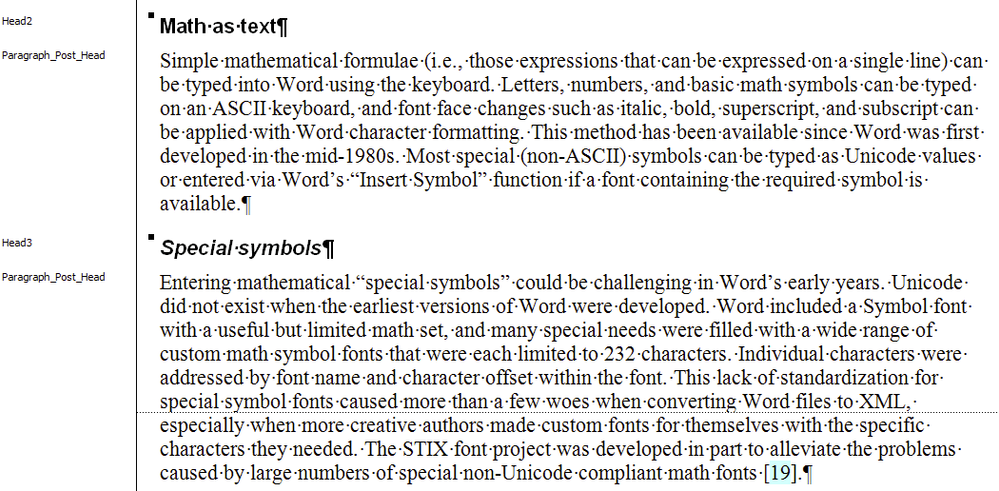Heading Styles
Heading styles are self-explanatory. Headings should always be correctly nested (i.e. never skip heading levels just to obtain a particular visual "look" in Word).
Head 1, Head 2, Head 3, Head 4, Head 5, Head 6
eXtyles NLM supports up to six levels of headings. Always use the highest available heading level; i.e., don't skip heading levels just to obtain a particular visual appearance in Word. Headings may be numbered in the Word file. Always use a "strong" separator such as a tab, a period or a colon between the heading number and the text of the heading.
By default in eXtyles NLM, the heading level is not indicated explicitly in the output XML. Instead, it can be inferred from the nesting of the <sec> elements. Level-1 sections have a @sec-type attribute applied to the XML by default. For certain section titles, e.g. Introduction, Methods, Conclusions, this is prepopulated as e.g., @sec-type="introduction". Otherwise, the @sec-type attribute takes the value "other" with an ascending number series to ensure that each attribute value is unique, i.e., "other1", "other2", etc.
Example
The following example demonstrates the use of the Head 2 and Head 3 paragraph styles. This illustration is an excerpt from the sample document: Sample 1_Math-in-Word.docx
